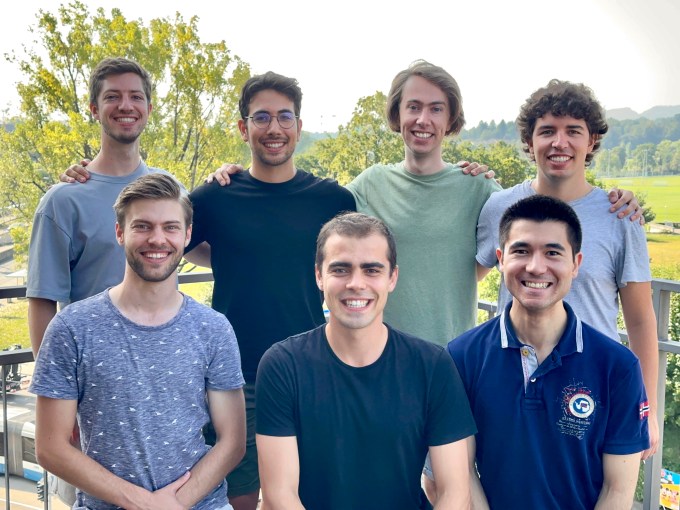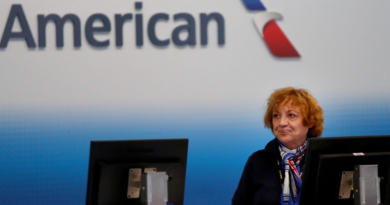Ascento’s robots aid overstretched security guards
Like in many industries, there’s an acute shortage of security guards. This means guards still on the job have to pull extra hours and are more likely to make mistakes because of fatigue. Ascento is stepping into the gap with autonomous security patrolling robots called Ascento Guards. Distinguished by their wheel-leg design that can cover a variety of terrain, Ascent’s security patrolling robots are currently deployed on large industrial sites and perform repetitive tasks like perimeter checks, sending alerts to human security guards when needed. The company says that they have covered 3,000 kilometers for outdoor security since early this year.
The Zurich, Switzerland-based startup announced a $4.3 million funding round today, led by Wingman Ventures and Playfair Capital with participation from investors like Tim Kentley-Klay, founder of Amazon-acquired Zoox; Clearpath CTO and co-founder Ryan Gariepy; mybotshop founder Daniel Kottlarz; the Swiss Innovation Agency; and European Space Agency incubator ESA BIC.
Ascento was founded by CEO Alessandro Morro, CTO Miguel de la Iglesia Valls, Ciro Salzmann and Dominik Mannhart, and began as a project at ETH Zurich in 2018. The company now has 10 people, and is hiring for its sales and operations team to scale their fleet of Ascento Guards.
Ascento’s robots move at walking place and perform tedious but important tasks like verifying perimeters, checking for holes or openings in fences, scanning for thermal anomalies, recording property lights, making sure parking lots are clear and detecting floods or fires. If they sense a security threat, like an intruder, an alert is sent to human security guards through the Ascento App, which also integrates with existing video management systems and has end-to-end encrypted communication.

Ascento Guard’s web interface with statistics and analysis
Morra tells TechCrunch that Ascento is the second wheel-legged balancing robot in the world after Boston Dynamics. A couple videos of the robot went viral soon after it was developed, hitting more than one million views.
After the videos went viral, Morra says Ascento received “hundreds of requests” to use the robots for different industries. Security piqued their interest because it is a labor-intensive industry with a large labor shortage. The team decided to get jobs as security guards to validate the idea and confirm that its robot can do all the checks and controls a person would, including perimeter and parking controls.
The wheel-legged design’s intention is to enable Ascento’s robot to go anywhere that people can, with the simplest possible hardware and while saving batteries. The wheels are attached to folding legs so the robots can also navigate stairs and uneven terrain.
Ascento’s robots and software are now offered on an hourly basis to large premises, working in combination with security companies that provide guards. Ascento’s code of ethics means that its robots are designed to work around humans without physical contact. The company is also a signatory to the open letter from Boston Dynamics, which states that general purpose robots will not be weaponized.
“With our technology we could do substantially more economically and more thoroughly, as machines don’t get tired of repetitive tasks,” Morra said. Having robots working in tandem with human security guards also helps address problems like high staff turnover and low margins for security companies, he added.
Want the top robotics news in your inbox each week? Sign up for Actuator here.
Ascento’s target users are companies with large assets that need to be patrolled on a daily basis, including manufacturing, logistics, pharma and luxury companies that own large properties.
One example of a place that uses Ascento Guards is a large outdoor storage facility that is a critical part of the Swiss railway infrastructure. The Ascento Guard checks that no doors are left open, no cars are parked overnight and that there are no emergencies like floods, fire or intruders. If a problem is detected, a human security guard is alerted immediately. A second example is a big pharma campus where Ascento Guards patrol 86 km a week to check that its fence is secure, all doors are closed and lights are off. The robots are onsite 24/7 and also check the video system and perform indoor patrols.

Ascento’s team: Ciro Salzmann, Giuseppe Rizzi, Sijmen Huizenga, Miguel de la Iglesia Valls, Jonas Enke, Alessandro Morra and Dominik Mannhart
Morra says Ascento’s closest competitors are Cobalt and Knightscope, both U.S.-based companies. But Cobalt focuses on indoor security and management, while Knightscope’s systems are designed for malls, schools and places with people. Ascento’s differentiator is its focus on large industrial areas, and its robots’ ability to handle different kinds of terrain.
Ascento Guard’s design is just the beginning for the company. “We are seeing multiple opportunities of how we can complement our robot to offer an indoor, aerial, application integration of our technology,” Morra said. “The robot is the way to support the most acute problem, labor shortage. But the true value that we will deliver is analyzing the captured data with AI” and identifying problems like location and time of incidents or cars that consistently park in the wrong place.



